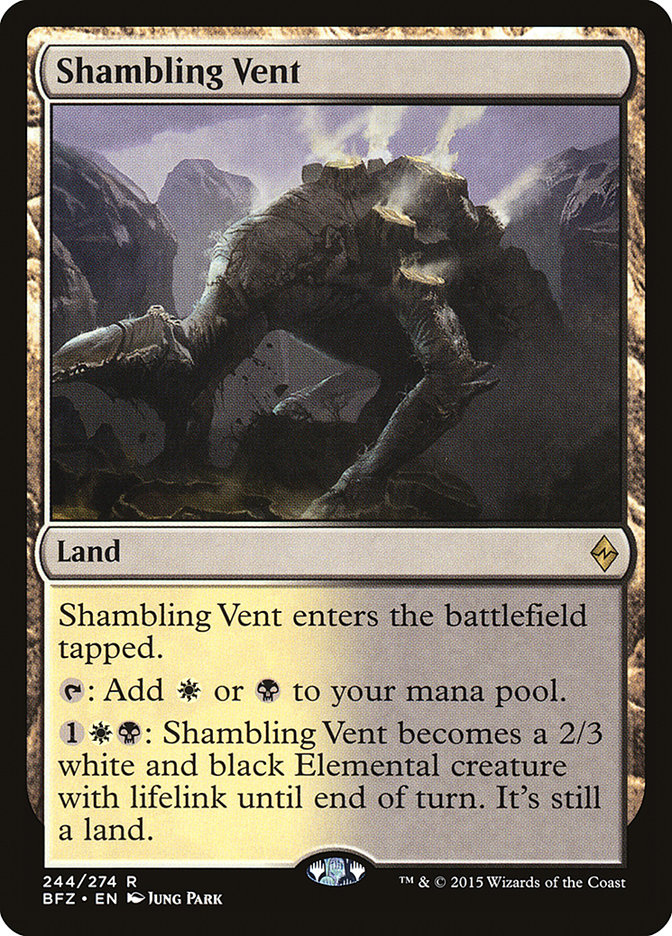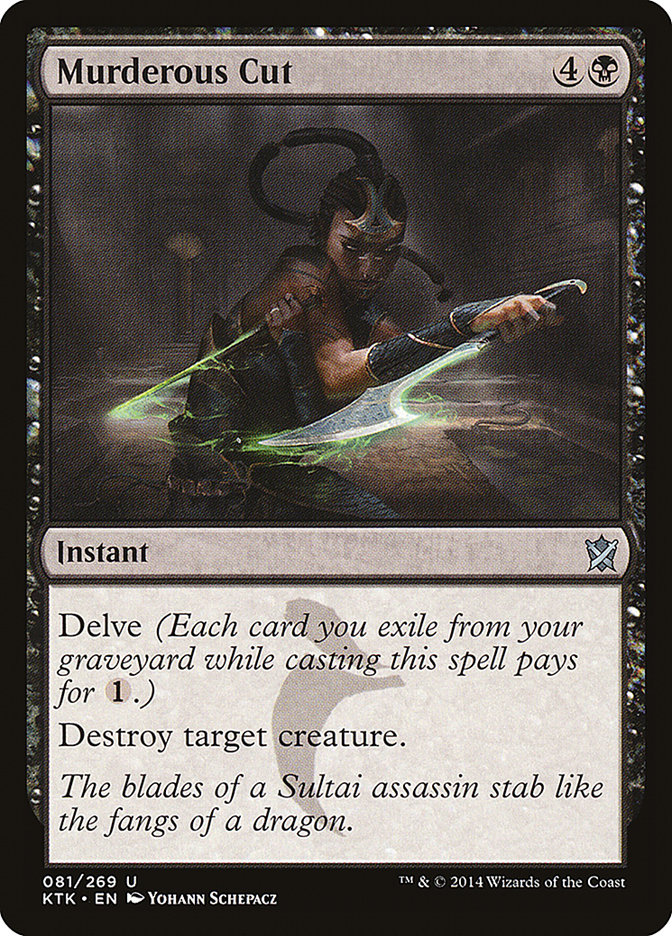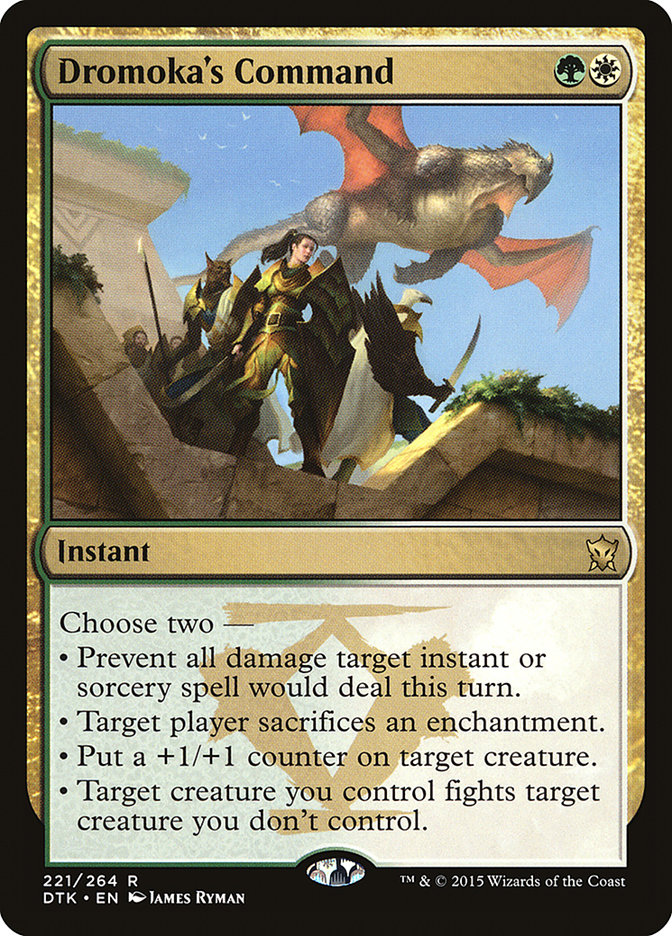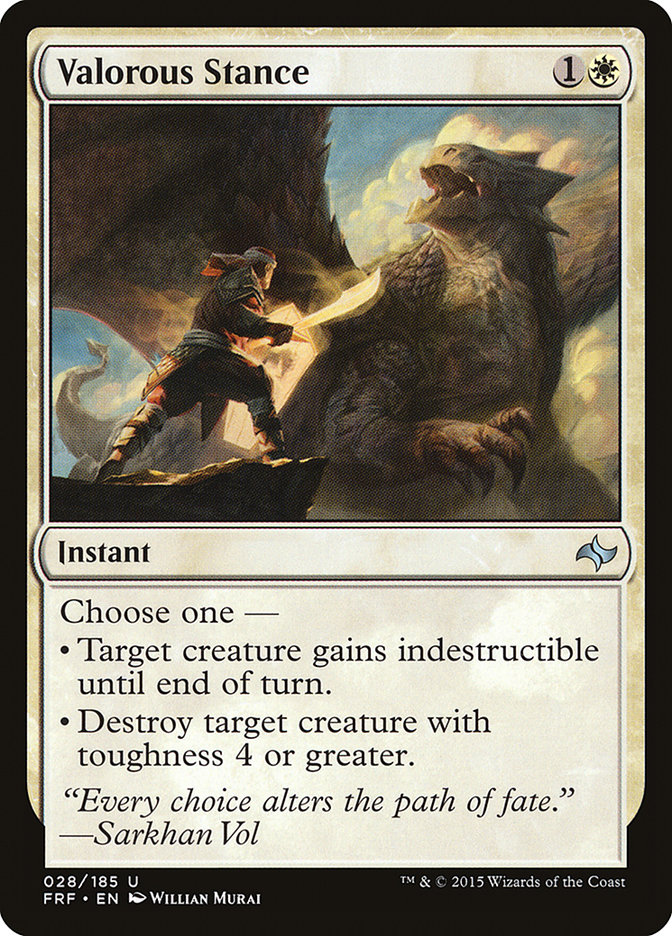After playing Esper Tokens to a mediocre finish at #SCGPHILLY last weekend, I left the tournament with a list of various things I could have done better.
At the top of that list was my failure to properly account for Abzan Aggro, both in terms of popularity and my preparedness for the matchup.
I went 0-2 against the deck in the tournament, and both times it felt as though my deck was largely outmatched as I succumbed to a stream of threats that
were mana for mana more powerful than mine. I was left to hope for an excellent Gideon, Ally of Zendikar + Wingmate Roc curve or for opponent to stumble or
flood, which is never a good plan.
The strangest part of this for me was that going into the tournament my opinion of the Abzan Aggro deck was quite low. It was a deck that had
underperformed in #PTBFZ testing for everyone I had talked to, and despite winning the tournament, had a lackluster showing overall while being played in
low numbers (according to this analysis). I was ready to
write the deck off and move on with a Jeskai Black, G/W Megamorph, and Atarka Red driven format.
A single copy of Abzan Aggro in the Top 8 of Grand Prix Quebec City
did little to dissuade me from my low opinion of the deck, and I focused my efforts on Jeskai Black, red decks, and the new G/R Eldrazi Ramp deck, as G/W
Megamorph seemed to be on the decline after the Pro Tour.
Siege Rhino thoroughly punished me for my underestimation, defeating me twice on the weekend while taking
four of the top 8 spots
in the tournament while I was left wondering what exactly had happened. This result is strong enough to suggest it is more than a fluke or the result of a
deck’s popularity exceeding its merits. Something had changed to make Abzan Aggro a significantly better deck in the weeks following Pro Tour Battle for
Zendikar.
This article is my attempt to analyze these changes and try to determine if Abzan Aggro’s dominance will be short-lived or if it’s a Rhino’s world and we
are merely living in it.
After poring over decklists from all the major Standard tournaments since Battle for Zendikar was released, there are three trends that stand out
to me that helped Abzan Aggro ascend to its current top spot in the metagame: refinement of the manabase (particularly the inclusion of four copies of
Shambling Vent), an increased threat density, and the decline of Valorous Stance.
Refining the Manabase
For the most part, early lists of the deck did one of two things: They pushed the fetchland + Battle land interaction as far as possible, as is the case
with Steve Rubin’s deck from #SCGINDY, or they used plenty of
painlands and dual lands that enter the battlefield tapped like Yusef Bridges. The power of fetchlands and Battle lands to provide
easy access to your colored sources made them preferable to the awkward and more painful dual land heavy lists, but the former provided no insulation
against flooding, an important aspect of any aggro deck that plays 25+ lands.
Still, other lists at early tournaments focused on making Knight of the White Orchid work, such as this one. However, straining an already stretched manabase to take
advantage of a card that is not a sizable threat on its own was not a successful plan. If anything, Knight will only serve to compensate for having so many
lands enter the battlefield tapped so you are not fully leveraging the ability even when it triggers.
The synthesis of these two styles of manabase did not fully emerge until the Pro Tour with Kazuyuki Takimura’s winning list:
Creatures (21)
- 4 Anafenza, the Foremost
- 2 Wingmate Roc
- 4 Siege Rhino
- 4 Warden of the First Tree
- 4 Den Protector
- 3 Hangarback Walker
Planeswalkers (4)
Lands (26)
Spells (9)

By cutting the Prairie Stream and Polluted Deltas, the latter of which were the worst lands in the deck in my experience, Takimura finds the necessary room
for Shambling Vent without sacrificing the core efficiency of the fetchland + Battle land manabases. This list has twenty white sources, eighteen green
sources, and sixteen black sources, which is quite good and still gets to play the full four creature-lands to help keep the pressure on in the mid-game
and increase the overall threat density of the deck for a very low cost.
Having a card like that in Abzan Aggro is very important since the stretched manabase requires an increased land count past what would normally be
acceptable for an aggressive deck. Temples provided great insulation from flood for the pre-BFZ version of the deck, and Shambling Vent is perhaps even
better since having an extra attacker on key turns is great against opposing planeswalkers or just to deal the last few points and seal a game before your
opponent stabilizes. Abzan Aggro is a deck that thrives on applying pressure early and maintaining that pressure to limit its opponent’s ability at counter
play, so any turn that you would have taken off that is instead augmented by a Shambling Vent attack is critical.
Moreover, the ability to pump the 2/3 body with Dromoka’s Command or Anafenza, the Foremost makes it particularly good in the Abzan shell, as the
difference between a 2/3 and a 3/4 in a format partially defined by Mantis Rider is huge. Creature-lands are simply among the most powerful cards ever for
reducing variance in your draws, so determining the most effective way of fitting them into the deck was an important innovation that I overlooked.
We all knew that it would take some time to optimize the very difficult manabases that Battle for Zendikar Standard would offer us, and
it is likely that these manabases will not stay optimal for long, shifting slightly each week to accommodate minor evolutions in each archetype, but it is
clear to me that Shambling Vent is a key part of the Abzan Aggro deck and should stay in successful lists in high numbers for the remainder of the deck’s
run.
Tuning the Removal Suite
Besides the ability to have access to all your colors with lands that enter the battlefield tapped, the other draw to playing so many fetchlands was having
access to the powerful removal spell Murderous Cut. Standard is so driven by tempo on the early turns that being able to play a good threat and kill their
best creature on turn 4 or 5 is an excellent sequence that leaves you very far ahead unless your opponent responds with a similar turn.
With Dromoka’s Command and Abzan Charm as staples of the deck, we see early lists play a fair number of removal spells. Take, for example,Tom Ross’s list from #SCGINDY and Fernando Machado’s list from the following week at #SCGATL, which no
doubt borrowed heavily from Tom. Even with Abzan Charm doubling as a card draw spell, having this many removal spells in your deck will certainly hinder
your ability to apply consistent pressure, and Abzan Aggro, while powerful, is far from the most powerful lategame deck in the format.
With the removal of Polluted Delta, Takimura saw fit to cut down to a single Murderous Cut while also removing the Valorous Stances that Tom played,
leaving him with a lean nine removal spells and a significantly increased threat density. This is much more in line with what the archetype is trying to
do, and thus represents a step forward in tuning the list, especially as the rest of the metagame is tuned and thus, you are less able to rely on your
opponent’s stumbling to gain initiative.
Granted, if you look at all the decklists from the past month, you will see that these lists represent the extremes of the lists in terms of removal spells
played, but there is certainly a slight trend downward, in no small part due to players simply copying lists that did well the previous week. Early on,
that is copying known players’ lists from Opens, like Tom Ross, but once the Pro Tour happens, that tends to be the list people build from. However, in
this case, it was perfectly fine since Takimura’s list is definitely a leap forward from Tom’s. In fact, the only significant deviation from Takimura’s
list among the three Abzan Aggro decks in the top 4 of #SCGPHILLY is Jared Bauer’s use of Heir of the Wilds over Hangarback Walker.
The lesson here is that you cannot get too cute with your aggro decks. At the end of the day, they need to kill your opponent as efficiently as possible so
you cannot get too seduced by powerful removal spells. Just because your aggro deck is capable of playing into the lategame does not mean you should make a
habit of doing so. Your goal in building an aggressive deck should be to create the deck that plays the bare minimum amount of interaction in order to stay
competitive so you can devote as much space as possible to threats, thereby creating early pressure most consistently. Those players that realized this and
adjusted their deck accordingly reaped the benefits.
The Decline of Valorous Stance
If you look over the top decklists of the pre-PT Opens (they can be found
here
and
here
), you will see a surprising number of Valorous Stances. There are eight copies in the top 8 of #SCGINDY, notably appearing in the original list ofG/W Megamorph by Michael Majors as well as both lists of Jeskai Black
that made the top 8. As those decks dominated the following weekend at #SCGATL, we see seventeen copies of Valorous Stance crack the top 8.
There is no denying that Valorous Stance is excellent against Abzan Aggro, as having an efficient answer to Anafenza, the Foremost and Siege Rhino is
important to blunt their early aggression and it can also serve to counter a key Dromoka’s Command or Murderous Cut. But it is very weak against Jeskai
Black since it did not kill any relevant creature in the early lists (Tasigur was adopted at the Pro Tour) and cannot protect your creatures from their
best removal spell in Crackling Doom. Moreover, Valorous Stance is weak against G/W Megamorph as well since that deck’s creatures are typically just small
enough to dodge the instant.
As Jeskai Black and G/W Megamorph were the two top decks entering the Pro Tour, Valorous Stance was not a popular card at the event. In my team’s testing,
the card consistently underperformed and only saw play in sideboards. Abzan was not expected to be popular, and Valorous Stance was largely unnecessary.
Despite Abzan Aggro winning the Pro Tour,
the top 8 decks of Grand Prix Quebec City
the next week contain one copy of Valorous Stance among them, and that is in the sideboard of the lone Abzan Aggro deck!
It appears that the metagame for the last two weeks has been overly focused on G/W Megamorph and Jeskai Black, and as such, Abzan Aggro was neglected and
in prime position to do well. Now that it has, I expect an increase in the number of cards like Valorous Stance and Self-Inflicted Wound with the former
able to appear in maindecks in small numbers since it can now kill Tasigur, the Golden Fang in the Jeskai Black matchup. Whether Abzan Aggro is strong
enough to withstand this metagame shift will be the key question to answer in the coming weeks.
Hopefully this provided a blueprint for all of you to perform similar analyses. Determining the role a deck plays in the metagame and the role each
innovation played in that deck’s evolution is paramount for understanding what the next step is and provides insight into how to take that step. And if you
want to play Abzan Aggro, this should have made you aware of how your opponents will shift to attack you so you can stay ahead of them.
Having completed my analysis and feeling satisfied with the results, I do not know whether to be proud or ashamed. Magic is an impossibly difficult game,
and none of us are going to see every angle, but nothing I have presented here was particularly deep nor was it obfuscated in any way. I was simply too
quick to dismiss Abzan Aggro and too careless to perform this analysis when it would have benefited me most. Magic evolves faster than ever these days, and
if you are staying still in reality, you are being left behind.






